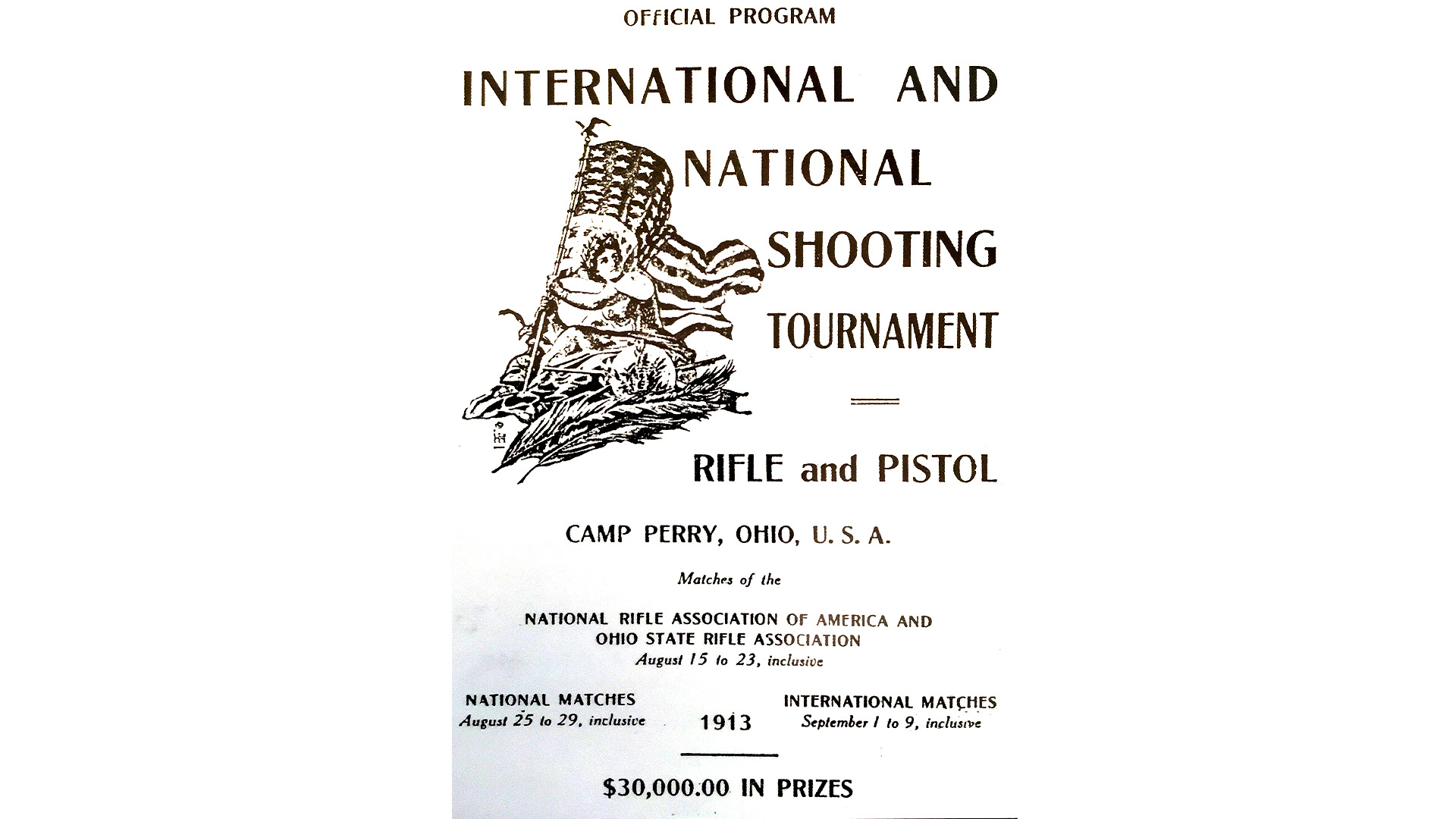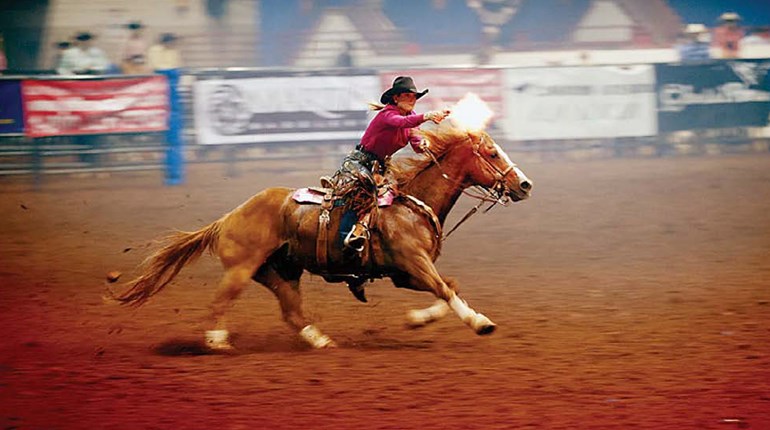
Camp Perry was the place to be for shooters in the summer of 1913. The month of September, especially, was significant in that it marked the 100th anniversary of Commodore Perry's victory at the Battle of Lake Erie. And, the International Matches held at Camp Perry as part of the 1913 National Matches were featured in a relatively new (for the time) recording medium—motion pictures.
The National Matches that year were engulfed in fanfare, as the U.S. hosted teams from South America and Europe in the international portion of the tournament, which included Palma competition, and followed the firing of the NRA and Board events. Organizational efforts to commemorate the Perry anniversary in a "shooting tournament of extra interest and importance" had begun two years prior, while trips abroad by U.S. shooters in 1912 helped secure reciprocation visits by foreign teams to Camp Perry. All of this set the stage for the 1913 National Matches to be "the largest shooting tournament which this country has ever witnessed," and thus, the interest in covering the event on film.
A short notice in the Army and Navy Journal for September 27, 1913 reported that...
"The world's greatest rifle and revolver marksmen, in a moving picture film a mile long, demonstrated their prowess before a group of Regular Army and National Guard officers at a private exhibition in the offices of the Selig Polyscope company of Chicago, Ill., Sept. 18. These motion pictures of the recent international marksmanship competition at Camp Perry, Ohio, were taken under the direction of Gen. Robert K. Evans, U.S.A., executive officer of the camp, and were praised by Maj. Eli A. Helmick, inspector general of the Central Division, and by Col. Milton J. Foreman, 1st Cavalry, I.N.G."
"General views of Camp Perry and of the visiting teams assembled for the contest were followed by pictures on the rifle range and behind the targets. Several remarkable pictures in which the photographer stood directly in front of the lines of riflemen were shown. There were many pictures of firing in the President's Match and in the Evan's Skirmish Match, after which a view of the winners receiving medals of recognition were shown. Another reel showing military maneuvers, where the regulars acted out every phase of Army life from establishing camp to charging the enemy, concluded the entertainment. The War Department is considering the purchase of the films as a record of the meeting and for educational purposes."
The 1913 National Matches were a watershed year in more ways than one for competitive shooting. While the cover of the 1913 match program, which read "International and National Shooting Tournament" (you can see this cover in the photo at the top of this article), and includes the $30,000 of prize money, it does not mention one overlooked piece of history—the Miniature Match. However, among the general information included in the match program was the following:
"The shooting grounds contain 400 acres and it is the largest shooting ground in the United States. There are 210 rifle targets and 20 revolver targets, to which will be added a new range containing about 50 targets, to which will be added a new range containing about 50 targets for the international matches, where the shooting will be held at 300 meters. Additional revolver targets will be installed, as well as a running deer target and targets sufficient to accommodate the Miniature Match."
The Miniature Match was significant in that it represents the first time that a smallbore competition appeared in conjunction with a National Match. Smallbore shooting would officially join the National Match schedule in 1919.
See more: A Brief History Of Reporting The National Matches

































